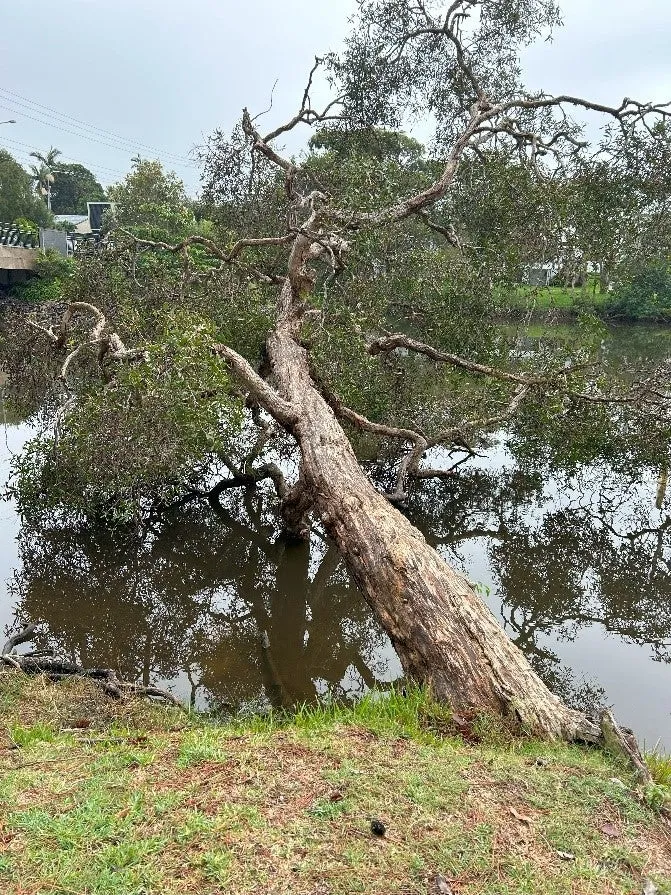Trees in waterways
Trees, large limbs, and branches that fall into or beside a watercourse are known as woody debris.

They are an important feature of a healthy watercourse that act to slow the flow, protect the shoreline, collect sediment, and provide critical habitat for native fish, frogs, and other aquatic animals.
Any trees, woody debris and vegetation in tidal waters are classified as marine plants. All marine plants in Queensland are protected under the Fisheries Act 1994, which defines a marine plant as:
- a plant that usually grows on, or adjacent to, tidal land, whether it is living or dead, standing or fallen;
- the material of a tidal plant, of other plant material on tidal land;
- a plant, or material of a plant, prescribed by regulation to be a marine plant.
Removing or trimming marine plants can result in significant penalties and on-the-spot fines, with serious cases taken to court.
Can council remove trees on riverbanks or in waterways?
Generally, council does not remove trees on riverbanks or in waterways. However, in specific cases involving public safety, access to infrastructure, research, or cleanup after a disaster event, removal may be necessary, while ensuring compliance with relevant legislation.
Can residents remove trees in waterways?
Woody debris is often best left in the watercourse where it falls. There are exemptions for watercourse works associated with emergencies and disasters.
What if the tree causes a navigational hazard?
Maritime Safety Queensland (MSQ) is the correct agency to report debris that may impact navigation on Queensland waterways.
